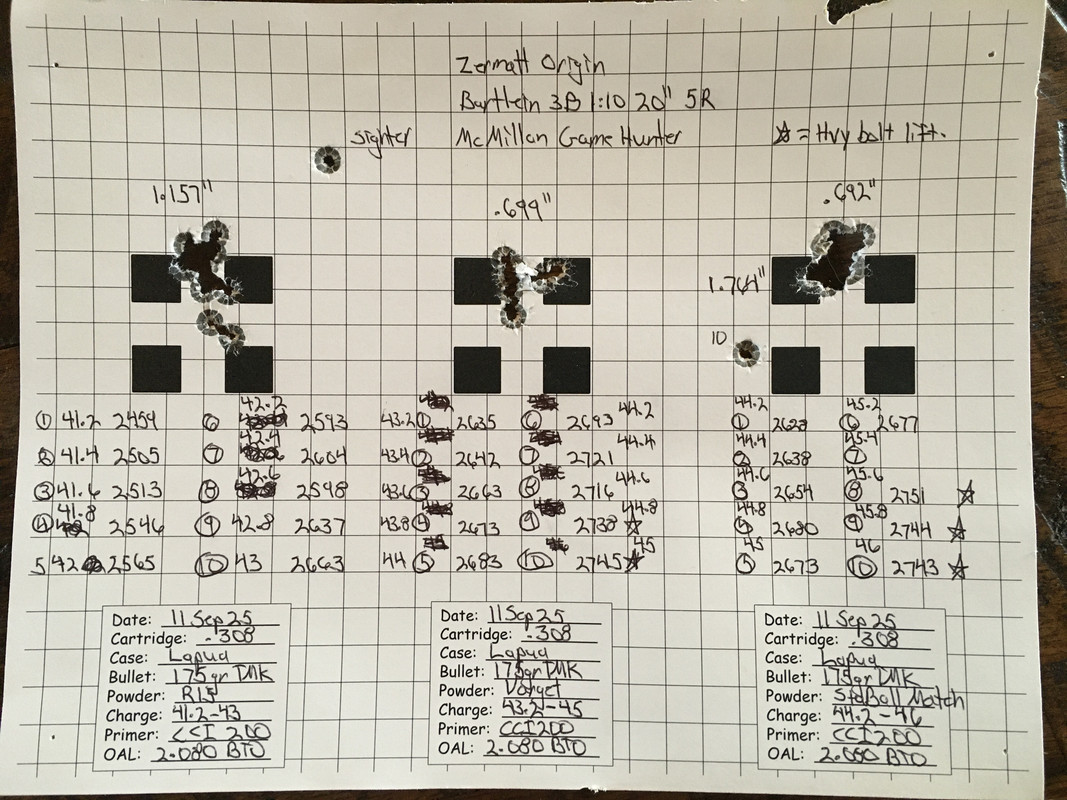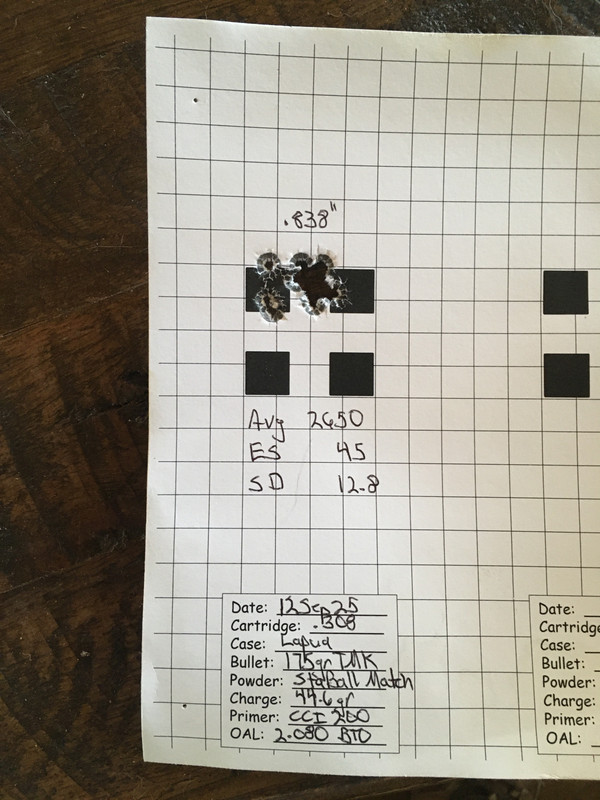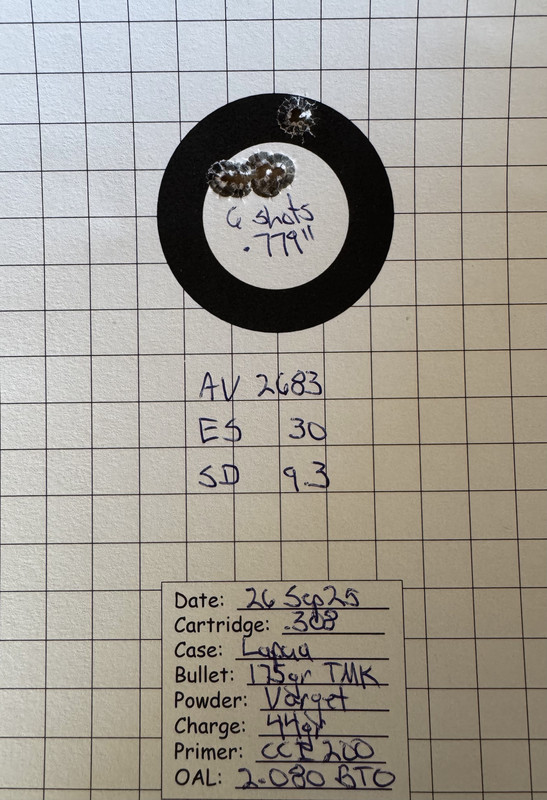I recently saw a series of videos on YouTube from a fellow from Little Crow gun Works doing load development with the 308 Winchester. His method was interesting to me, as he started out by trying to determine which of several powders his particular rifle liked the best. I decided to try and determine the same thing for my current .308 hunting rifle using a similar method to LCGW. I picked three powders I had, two of which I had just enough for this test, and that I wanted to use up. Those powders were Reloder 15, Varget, and StaBall Match. I loaded 10 rounds with each powder in .2 grain increments behind the 175gr Sierra Tipped Match King, which I also had a partial box of and wanted to go ahead and shoot up. The 175gr TMKs were seated at a 2.080” BTO, which is about .070” off the lands in my Bisley Palma .308 chamber. I am pretty much limited to this OAL by the magazines I prefer, which only allow about a 2.850” OAL. The 175gr TMK doesn’t seem to mind jumping in my rifle.
You can see the results in the picture below. I am not sure that there are any definitive results in this test, other than my rifle is very tolerant of different charges with different powders. If I had to pick a powder based on the group size and velocities, it would be Varget. Varget produced no “flyers” throughout the entire series and gave the most predictable velocity increase with each charge. Reloader 15 had the largest group size and some non linear velocity increases. That is unfortunate, as I have about 3.5 pounds of R15 left and would have liked for that powder to perform better. StaBall Match had a fantastic group for nine of the 10, but as you can see, the 10th charge produced a magnificent flyer, and it also had some non linear velocity increases. I still think I could pick a charge somewhere out of the middle of charges one through nine and probably have a good shooting load. I had previously run a similar five round series with StaBall Match behind 168gr Tipped Matchkings, and it grouped five different charges in .31 inches, so apparently, my rifle really likes StaBall Match.
Some people think that when you see velocities start to go down or level off with increasing charge that it is an indication of a so-called “node.” I have played with that theory and don’t buy into it. If you are increasing propellant, you are supposedly increasing the gas produced by the detonation of that propellant, and should see an increase in pressure and velocity as a result. When I see an increasing charge producing a lower velocity, it makes me wonder how stable that powder is or how consistently it is burning in that particular rifle.
The other thing this test makes me wonder about is whether any of this matters. When I pick a charge where these powders clustered the bullets the tightest, and load ten of that same charge, am I going to get a smaller group than produced by ten different charges? We shall see…
John











